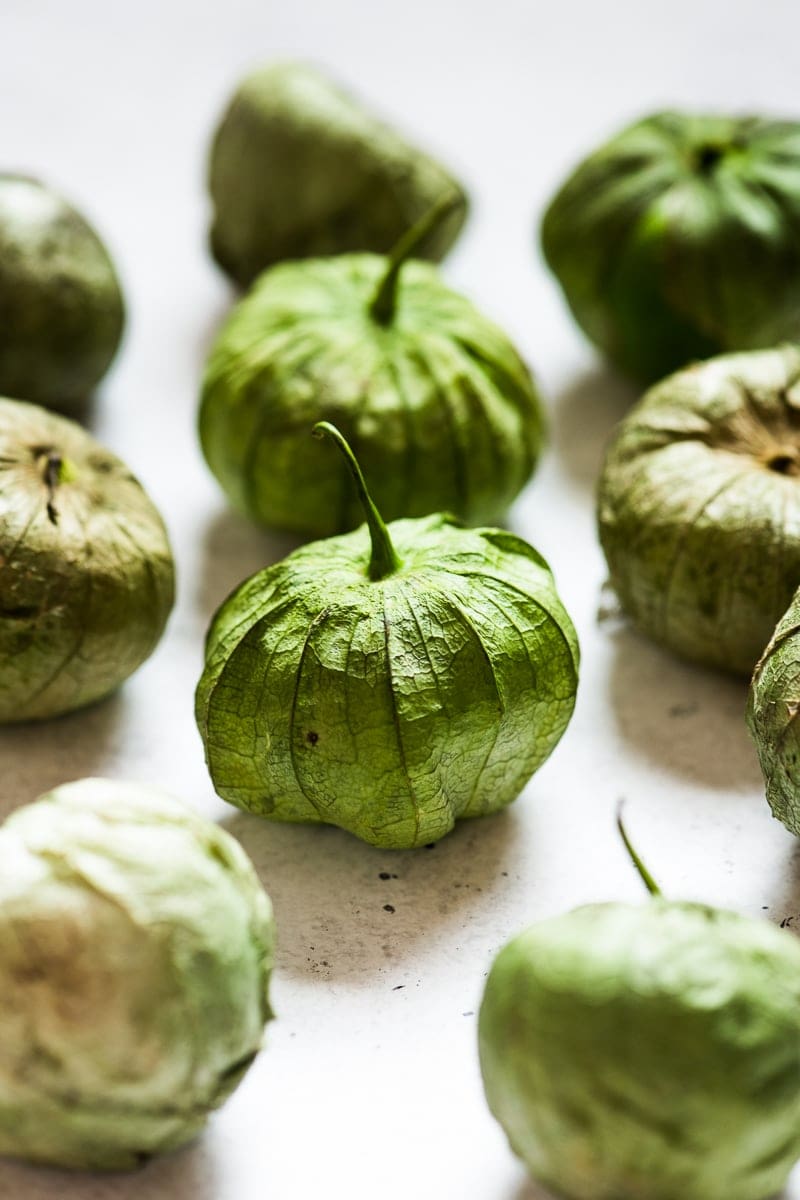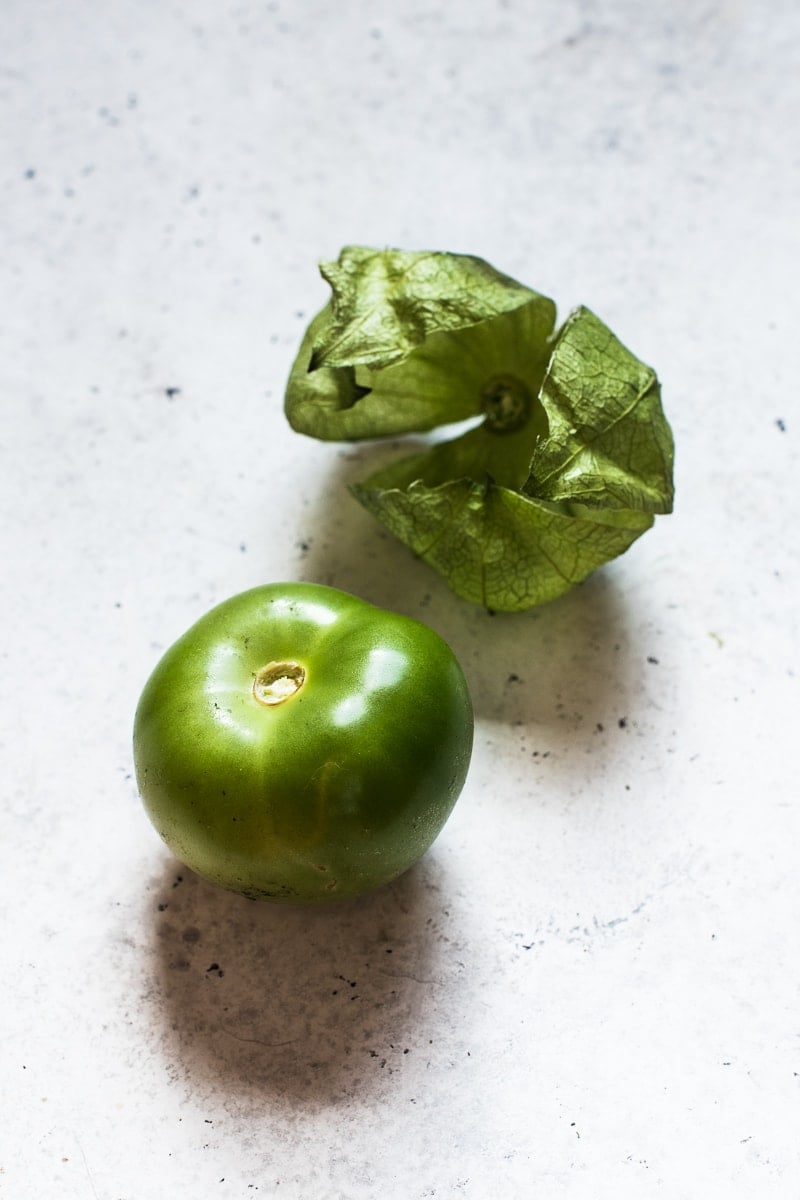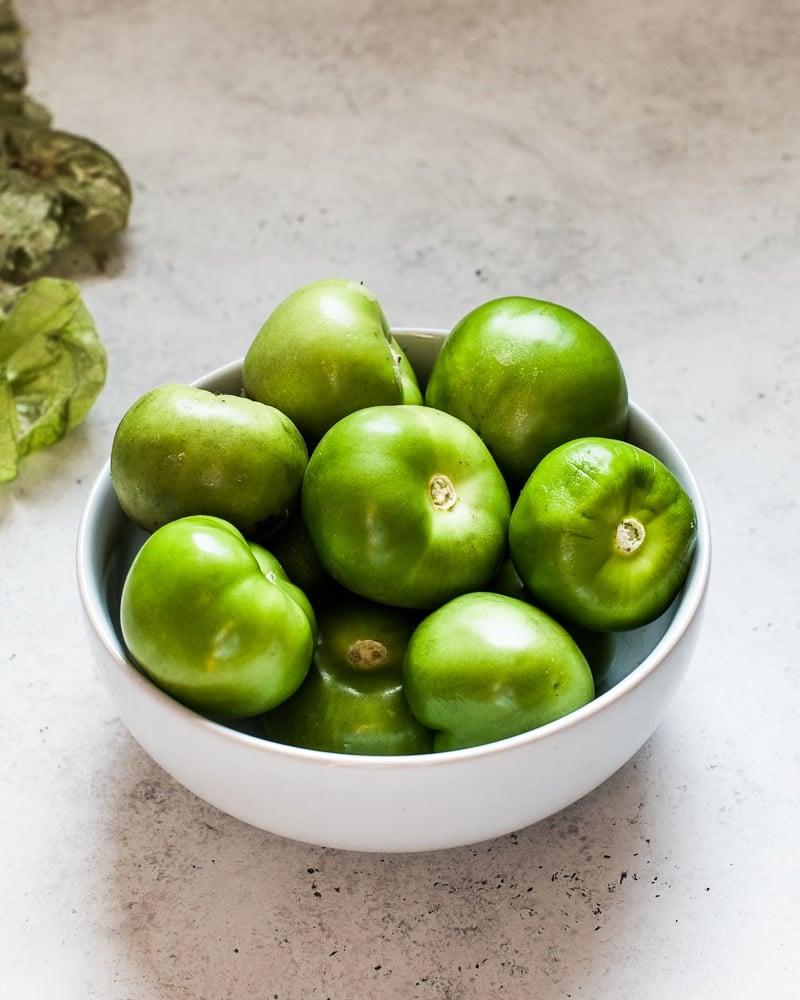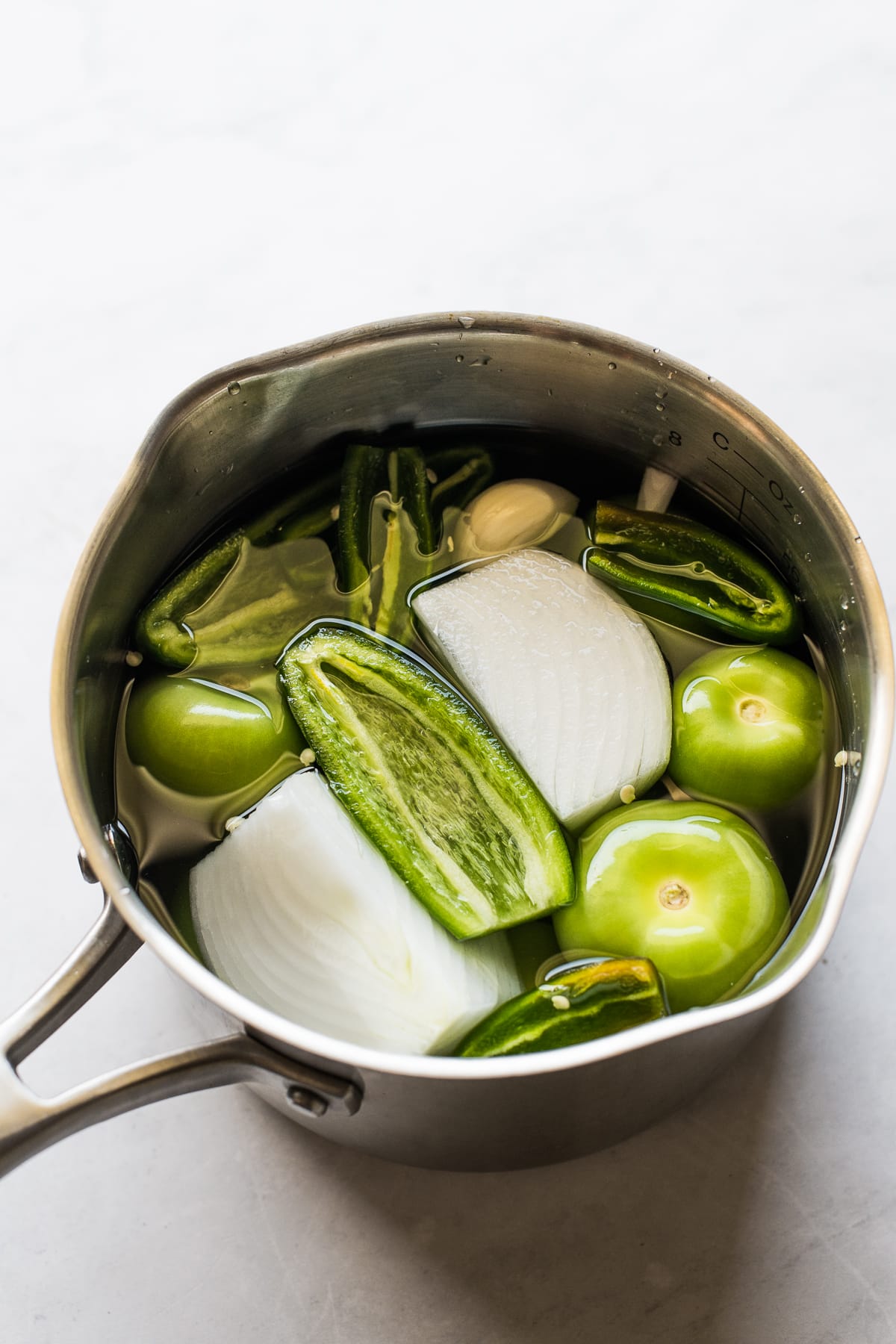Tomatillos are a popular Mexican vegetable used in salsas, sauces, and soups. They’re tangy and slightly citrusy, perfect for adding a pop of freshness to your dishes!

What Are Tomatillos?
Tomatillos are a small round fruit with a green color and a papery husk. They’re native to Mexico and are commonly used in Mexican cuisine to make salsas, sauces, and more. Other names for the fruit are:
- Mexican tomato
- Mexican husk tomato
- Jamberry
- Husk cherry
What Do Tomatillos Taste Like?
Tomatillos are tangy, slightly tart, and citrusy, with a hint of sweetness. Their level of tanginess depends on how ripe they are, and how you prepare them can also affect how they taste.
Boiling, roasting, or sautéing each brings out a different flavor of the tomatillos. Fresh, raw tomatillos have a unique flavor that is tart, bright, and almost citrusy. When boiled, the tomatillos tend to keep their tart flavor, but when roasted, they become a little sweeter and lose some of their tartness.


Tomatillos vs Green Tomatoes
Tomatillos and green tomatoes might look alike, but they’re pretty different. Tomatillos are grown inside a papery husk and have a tangy, citrusy flavor with a firm texture. On the other hand, green tomatoes are simply unripe tomatoes, and they’re more acidic and less juicy.
Tomatillos are often used in salsas and sauces, while green tomatoes are popular in dishes like fried green tomatoes.
How to Use Tomatillos
Tomatillos are mainly used in salsas, sauces, and soups, especially the popular salsa verde. You can eat them raw, boil, roast, or sauté them depending on the flavor of the tomatillos you want to highlight. Always remove and discard the papery husk and rinse them well under cool water to remove any sticky residue.
Boiling brings out a tangy flavor and mellows out the sourness of the tomatillos. To boil, add enough water to a pot to cover the tomatillos and other ingredients. Cover and boil for about 10 minutes until the tomatillos are softened and change from a bright light green color to a more muted yellow-green color.
Roasting adds a layer of smokiness, brings out a bit of sweetness, and tones down some of their sourness. To roast, place them on a baking sheet and broil for about 5-7 minutes until the skin is blistered and blackened.
Sautéing brings out the sweet and citrusy notes of the tomatillos. To sauté, heat 1 tablespoon of olive oil in a large skillet over medium-high heat. Cut tomatillos in half and add to the skillet along with other ingredients. Sauté until they start to brown and soften.
You can prepare my salsa verde by using any of these cooking methods, and you will get great results!

Tomatillo Recipes
Tomatillos are most commonly used as a base for salsa verde but can also be used in any of these popular recipes for a great tangy and citrusy flavor:
Tomatillo Substitutes
There are a few substitutes that will give you a similar effect to tomatillos, but it’s hard to replicate the same unique tangy and citrusy flavor. If you don’t have tomatillos, you can try the following:
- Fresh or canned green tomatoes
- Green bell peppers
- Green apples
Picking and Storing Tomatillos
You can find fresh tomatillos in the produce section of the grocery store or look for them at a Mexican food market.
When picking tomatillos, lightly lift the papery husk so you can see the skin. Make sure the skin is free of any spots, and it has a firm texture. If the tomatillo has brown or black blemishes or soft spots, discard them.
To store, refrigerate the tomatillos until ready to use. They should stay fresh for up to 2 weeks.

